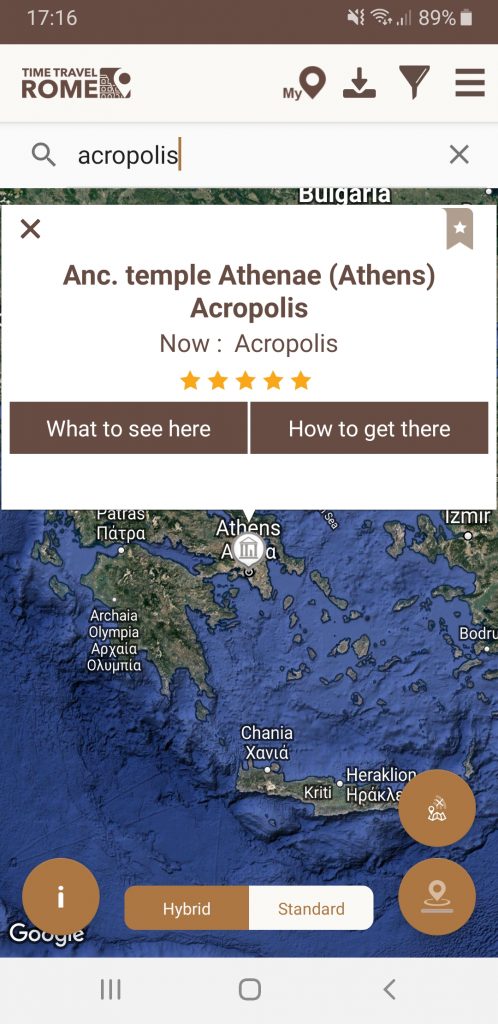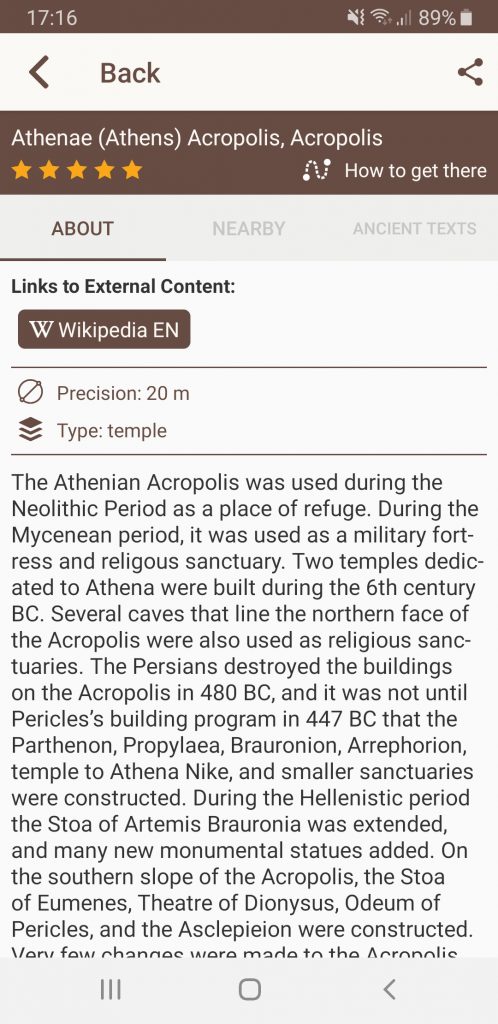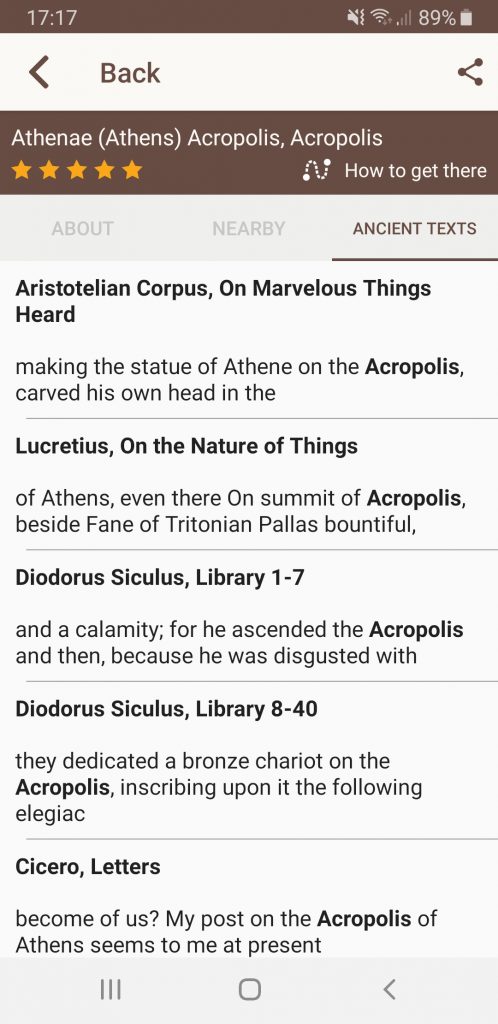The Acropolis of Athens is one of the most spectacular ancient Greek monuments that are still visible today. The sanctuary reached its peak when the Athenians, empowered from their victory over the Persians, built a number of great monuments including the famous Parthenon, the Erechtheion, the Propylaia and the temple of Athena Nike. The Acropolis has become the visible symbol of all that was Classical Greece. But in spite of its splendor, almost no ancient depictions of the Acropolis survived. There are just a few exceptions. Two very rare coins struck in Roman time show how Acropolis looked like in antiquity. One of them is the only depiction of Parthenon on ancient coins in existence.
Western side of Acropolis: Erechteion and Athena Promachus
The coin below was struck in Athens under the Roman rule, possibly, in the second part of the 2nd century AD or maybe earlier. The obverse shows Athena wearing Corinthian helmet. The reverse of the coin shows the view of the Athens Acropolis from north and west.
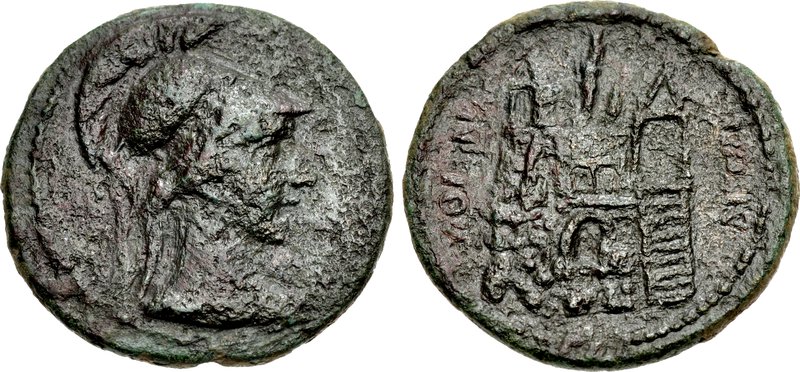
The coin above is an average state of preservation. Thus, for illustration purposes, we will use the reproduction of a similar coin taken from an old monograph. One can see on the reverse of the coin two temples on the top of a rocky hill. The left temple is Erechteion, and the right one is not a temple, but the Propylaia. From the ground level the Panathenaic Way is leading upward to the Propylaia on the right side. The colossal statue of Athena Promachus stands between the Erechteion and Propylaia. Finally, on the slope of the hill, there is a niche representing the Cave of Pan.
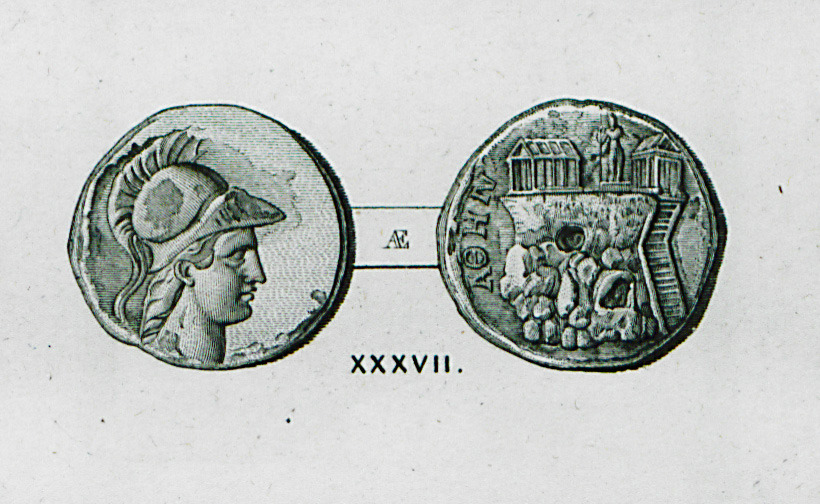
One theory says that this coin was struck in commemoration of renovations decided by Claudius. This roman emperor was a benefactor of Greece as he restored to Greece statues that Caligula had carried off. It is also possible that the coin was struck to commemorate the paving of the staircase leading to the Acropolis with white marble. Today, most numismatists think this coin was not truck under Claudius but later, in the middle of the 2nd century AD. Another example of this rare coin can be found on the website of the Ashmolean Museum.
Southern side: Parthenon and Theater of Dionysos
The coin below is much rarer than the first one. Only a handful of them were found so far. One of such coins is part of British Museum’s Payne-Knight collection. Another one is kept in Harvard Museum.
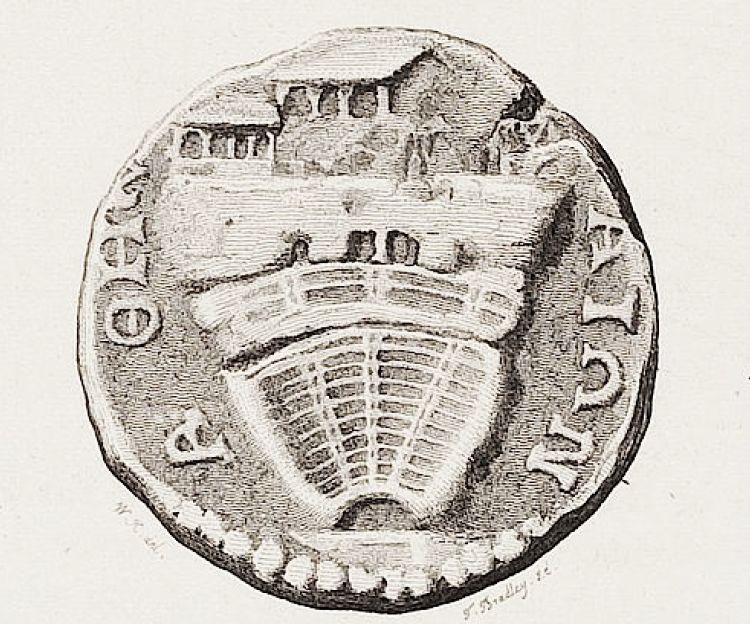
This second coin was possibly struck in commemoration of the newly renovated Dionysos Theatre during Hadrian’s reign. Hadrian was the first emperor to visit Athens since Augustus and he was agonothete (superintendant) at the Dionysia in Athens in 125 and 132 AD. He was also a great benefactor of Athens and the Theatre of Dionysos was adorned with his statues. However, we can’t be sure about this date of mint or the association with Hadrian: so far only a dozen of coins with Parthenon reverse were found.
For further reading about the coins we have described we suggest the following reading: “Athenian Imperial Coinage”, Hesperia Volume 5, Issue 3 (1936).
Acropolis changes in Roman times
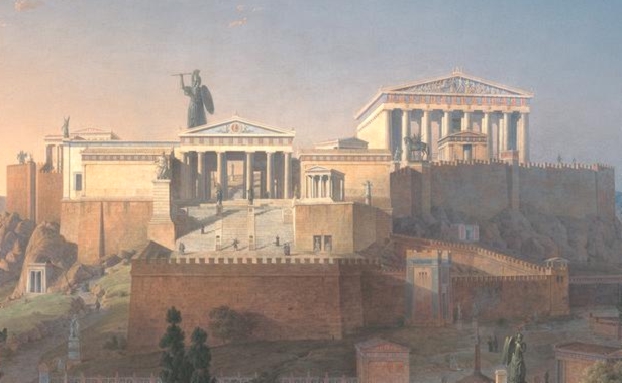
The two coins above highlight Acropolis appearance in the roman time. But in fact only very few changes were made to the Acropolis during the roman period. The most important addition was the circular temple of Rome and Augustus. It was built in 19 BC to commemorate the victory of Augustus over Parthia. A number of statues were also rededicated to Augustus and the Roman general Marcus Agrippa.
On the southern slopes, several buildings were re-modelled following damage during Sulla’s attacks. Later, the Odeon of Herodes Atticus was built. On the north face, an additional sanctuary cave was founded which the archons used for offerings to Apollo when assuming office.
Around the time of the Herulian invasion of AD 267, the Acropolis walls were strengthened, and a new staircase and the Beulé Gate were constructed at the entrance to the Propylaia to restrict access to the sacred precinct
What to see there now ?
Visitors enter the Acropolis via the monumental Roman staircase. It leads to the Propylaia and the Temple of Athena Nike. The most prominent buildings are from the Classical Period and include the Parthenon and Erechtheion.
The Roman-era temple to Rome and Augustus is no longer standing. Visitors tend to leave the Acropolis through the Beulé Gate. On the southern slopes, the Odeon of Herodes Atticus and Theatre of Dionysus are beautifully preserved.
To find out more: Timetravelrome.
